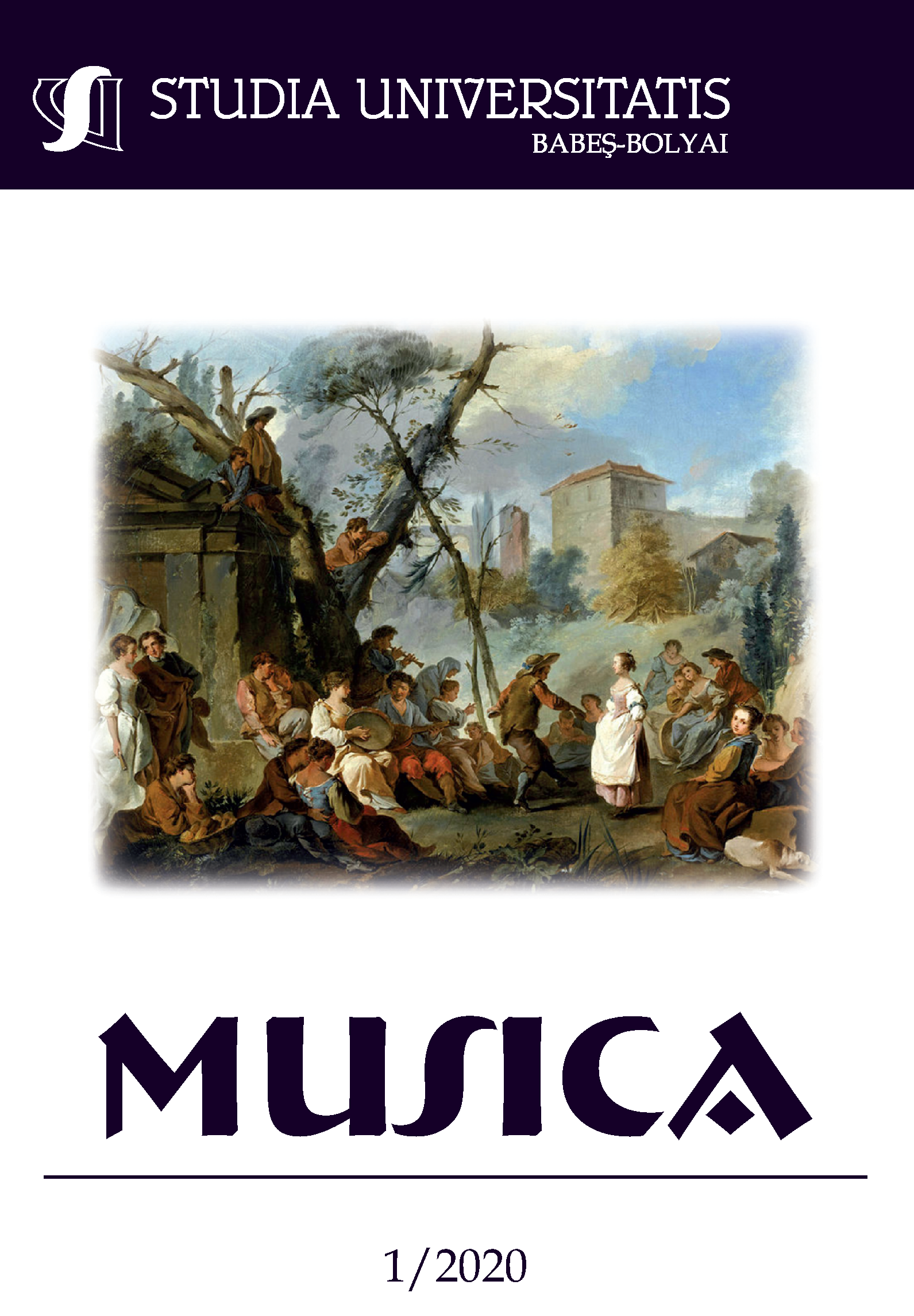ASPECTS RESULTING FROM THE ANALYSIS OF THE TONE ROW USED IN DE PROFUNDIS BY ARNOLD SCHOENBERG
DOI:
https://doi.org/10.24193/subbmusica.2020.1.14Keywords:
twelve – tone technique, tone row, atonality, all-combinatorial hexachords, Arnold Schoenberg.Abstract
This article presents the tone row used by Arnold Schoenberg in the choral work De Profundis, written in twelve – tone technique, in two hypostases: as a grouping of all-combinatorial hexachords (rare quality leading to a deliberate symmetry in the transformation of the note row) and as the sum of two interval dyads (complementary or antithetical). The composer’s choices regarding the notes used in the series emphasize a permanent pendulum between the concept of tension and relaxation, between gravitational sound systems (with interval resolutions) and non-gravitational ones. These aspects convince us of the musical maturity at which Schoenberg arrived in his last compositional period, in which he chose to express himself without exclusively choosing one language (tonal or atonal).
References
Babbitt, Milton. Words about music. Maddison Wisconsin: The University of Wisconsin Press. 1987, p. 116.
Couvillon, Thomas. Text and structure in Schoenberg’s Op. 50, and an original composition, symphony #1. Louisiana State University. 2002.
Klontz, Mary-Hannah. The Heart and Mind of Arnold Schoenberg’s “De profundis” Op. 50B. George Mason University Fairfax, VA. 2015.
Kostka, Stefan. Twentieth-Century Music. New Jersey: Prentice-Hall. 1999, p. 209.
Móricz, Klárá. Taste for the Things of Heaven in Jewish Identities. Berkeley: University of California Press. 2008, p. 312.
Rochberg, George. The Harmonic Tendency of the Hexachord in Journal of Music theory, vol. 3, no. 2. Yale: Duke University Press. 1959, p. 208-230.
Vinaver, Chemjo. Anthology of Jewish Music. New York: Edward Marks Music Corp. 1955, p. 6.
Downloads
Published
How to Cite
Issue
Section
License
Copyright (c) 2020 Studia Universitatis Babeș-Bolyai Musica

This work is licensed under a Creative Commons Attribution-NonCommercial-NoDerivatives 4.0 International License.






